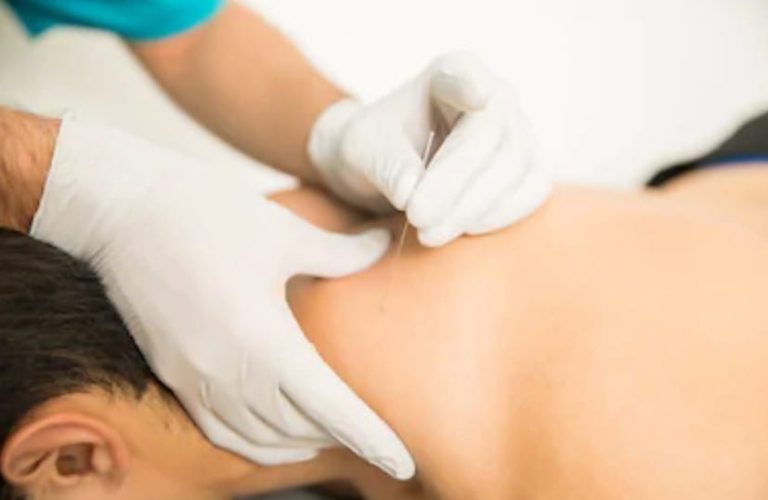Remedial Massage for Muscle Bruises, Contusions, and Hematomas
Muscle bruising—the fancy medical term is “contusion”—is an injury to the muscle fibres, connective tissues (including fascia), and blood vessels. It’s the burst vessels leaking blood into the space under the skin that causes the colour.
Bruising is frequent in upper leg muscles like quads and hamstrings. Contused muscles are the second-leading type of sports injury, next to muscle strains.
During the initial stages, massaging above or below the bruise is fine, and may help to clear the bruise faster.
Massaging a fresh bruise directly can cause more damage and slow the healing process. Patience is crucial to healing.

Caring For Your Bruised Muscles
Healing starts within a few hours to days for mild to moderate contusion injuries but can take up to a few weeks depending on how severe the bruising is.
If the pain is making it hard to do what you need to do in life, over-the-counter anti-inflammatory medication may be useful to reduce pain and discomfort. Just don’t overdo it, since reducing inflammation also extends the length of time needed for healing, or could lead to incomplete healing of the damaged tissues.
Some therapists may recommend the RICE (Rest, Ice, Compression, Elevation) protocol. However, ice is generally considered to be outdated advice for bruises or contusions, for two main reasons:
- Ice can slow down the healing process, slowing the return to activities. [1, 2, 3]
- Similarly, heat could further irritate and inflame the injury in the early stages. [4, 5, 6]
- Massaging a fresh bruise (especially with firm pressure) can actually worsen swelling or enlarge the bruise; gentle touch only, and only after initial tissue response has settled. [7]
Your best approach is to do very little—but not nothing! Compression and elevation are still good options. Gentle movement like walking is useful to encourage some fluid movement and blood flow. However, high-energy movement should be avoided for the first few days.
Massaging it directly early on won’t make it disappear faster!
You want blood getting to the tissues around the bruise, since that blood carries the building blocks needed to repair the tissues. You just don’t want so much blood flow that it bursts the clotted vessels again!
If you are experiencing pain from the bruise, try wrapping it in a compression bandage or using a compression garment to control swelling.
Moderate to intense exercise or high-impact sports can raise blood pressure and burst the healing blood vessels of the bruise. Keep your movement to low intensity like walking. Stairs should be fine, but use your judgement and don’t bound up staircases!
Just avoid re-injury and let your body do what it does best: take care of you by itself.
If there are no signs of change and improvement after three to four days, this could mean the injury is more severe and you should seek medical attention.
Suggested recovery flow:
- Days 0–2: Gentle movement only; avoid ice, heat, or massage.
- Days 3–5: Monitor healing; light movement remains key.
- After Day 5: If warranted: introduce remedial massage or lymphatic drainage (if you’re confident it’s an uncomplicated bruise).
- Seek help immediately if the bruise is large, abdominal, bedraggled, or slow to subside—or if nerve or blood vessel damage is suspected.
Causes of Muscle Bruising
The cause of bruised muscles is usually trauma such as a strike or repeated strikes with a blunt object to major muscle groups or other parts of the body. A muscle tear (called a “strain”) can also cause contusions if the strain tears blood vessels within and around the muscle.
(I wrote another article about remedial massage for muscle strains here.)

Contusions commonly result from accidentally banging your body on a hard surface like home furniture. This crushes the underlying tissues, fibres, vessels, and connective tissues while your skin remains intact and unbroken.
While it is considered a mild injury in most instances, bruised muscles can bring about surprising levels of pain and even serious tissue damage in more severe cases.
It’s important to take care of yourself and seek the right treatment!
Symptoms of Bruised Muscles
A contusion is closely followed by swelling and pain, often limiting joint range of motion near the site of injury.
The area turns that beautiful reddish-bluish colour due to bursting and leaking blood vessels. As the vessels repair themselves and your body clears away the leaked blood, the bruise turns brown or yellow which is a good sign you are on the road to recovery.
The bruised muscle may feel weak and stiff as your nervous system automatically dampens muscle signalling as a protection from further damage.
More severe contusions are called hematomas, where a pool of blood that has collected within damaged tissue forms a thickened lump over the injury. Hematomas can take several weeks to months to heal completely.
Severe tissue damage with very large bruises may also indicate other injuries such as broken bones, dislocated joints, ligament sprains, torn or strained muscles, and so on. Chances are pretty good that if the bruise is severe, you’re already in the hospital.
When To Get Remedial Massage For Muscle Contusions And Hematomas

Early Stages
Remedial massage or myotherapy in the early stages will focus on working the muscles above and below the site of injury to relax muscles that may be in protective spasm. Passive range of motion techniques (where you relax and the therapist movs you without your effort) might also be used.
Manual lymphatic drainage can also be useful to help drain the area if there is a lot of fluid leakage from the blood vessels.
Medium Term
After five to seven days, when blood vessels are healed enough, remedial massage or myotherapy can help to clear the bruise more directly. When done well, this can dramatically improve healing times and appearance.
Your therapist may also advise you on some self-treatment techniques so you can continue to assist and speed the healing process between treatment sessions.
Long Term
Long-term care is usually only necessary for hematomas, which can be deep inside large muscles like quads, hamstrings, calf muscles, and glutes.
Being deeper injuries, hematoma treatment tends to be a deep tissue massage that can be challenging to receive. Therapists sometimes use hand tools like steel or wood implements to get deep into the tissues and clear away blood clots that your body may be struggling to break down on its own.
If you are over 50 years old, massage or myotherapy for hematomas should be assessed and performed by an experienced practitioner to avoid any risk of thrombosis. While unlikely, there is a remote risk of a blood clot entering your blood vessels and leading to a stroke or heart attack. If you have the choice to be either 99.9% certain that won’t happen, or 100% certain, go for the 100%!
When to Seek Medical Attention for Muscle Bruising
Abdominal (tummy) contusions could mean internal organ damage and require medical attention.
If left without treatment, severe muscle injuries could lead to medical complications, too. These complications include:
- Compartment syndrome. If an injury results in internal bleeding, your tissue can swell due to the pressure and may struggle to clear, leading to extreme fluid buildup. This is both painful and dangerous as it can decrease how much blood flows into your muscles and nerve cells. That can result in the tissues dying and possible loss of the limb. You don’t want that. Nobody wants that.
- Myositis ossificans. When a muscle bruise is deep or there is repeated trauma to the same muscle, muscle tissues may harden and form tiny bone fragments within the muscle as a defence. Your range of motion can be severely reduced by this complication. You would need close work with a physiotherapist or clinical myotherapist for several months to a year to resolve myositis ossificans. While muscle bruising tends to heal by itself in most cases, more severe or repeated muscle injuries might need medical attention. If symptoms don’t get better within a few days after injury, make an appointment with a physiotherapist, clinical myotherapist, or doctor at once for a full diagnosis.
A physical exam and maybe an ultrasound scan will be able to pinpoint the exact location and severity of your contusion injury.
Doctors might also use diagnostic imaging tools such as x-rays, magnetic resonance imaging (MRI) scans, or computerized tomography (CT) scans to get a complete picture inside the area of injury and rule out broken bones, joint sprains, torn ligaments or organ damage.
Physicians may also need to assess if there has been any nerve or major blood vessel damage alongside the contusion.
Summary
For “everyday” bruises: don’t rest, don’t ice, don’t apply heat. Just move gently, and be patient. Get remedial massage or myotherapy if you have muscle spasms, or after five days to help speed up the healing process.
Manual lymphatic drainage can also help to clear yellowing bruises, including those following a surgical operation.
For moderate to severe bruises or hematomas, seek medical attention if your abdomen is injured or if the bruise is larger than the palm of your hand.
Get remedial massage or myotherapy from an experienced practitioner throughout the process to support healing, recovery, and a return to full muscle and joint function.
Bruise / Contusion / Haematoma — Self‑Care & Referral Flow
Client‑safe decision aid for muscle bruises/contusions. Use clinical judgement. If in doubt, refer to a GP or urgent care.


